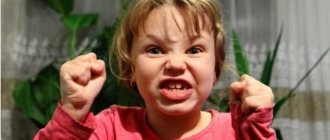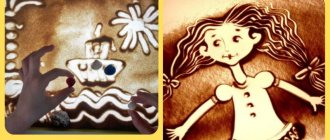Preventive program for burnout syndrome among preschool teachers
Preventive program for burnout syndrome among preschool teachers
Efimova Maria Vladimirovna
As in any society, in a preschool children's institution (DOE), educators periodically encounter misunderstandings of each other and conflict situations that arise on this basis. Teaching and educational activities are especially often accompanied by stress, which can arise for various reasons, including: mental and physical stress, emotional fatigue, conflicts in the team, conflicts with students, their parents, etc. With prolonged exposure to professional stress on the teacher of this kind, he develops emotional burnout syndrome (EBS).
So, emotional burnout syndrome is a reaction of the body that occurs during prolonged exposure to professional stress and is caused by mental and physical stress, emotional fatigue, etc. It is worth noting that burnout syndrome is especially susceptible to people working in the “human-human” system. people,” that is, those engaged in activities directly related to people - teachers, educators, doctors, rescuers, social workers, etc.
It has been noticed that people with burnout syndrome suffer from frequent headaches, weight loss/gain, sleep disturbances, apathy, boredom, guilt, disappointment, asthenia, etc. As a result, a person loses interest in his work, his self-esteem drops , there is a clear decrease in enthusiasm, a feeling of loneliness and distancing from colleagues and students appears. All this leads to strong, often unreasonable, irritability and conflict behavior.
Consequently, in preschool educational institutions, as in other educational institutions, preventive measures are needed to prevent burnout syndrome, which, in turn, will allow:
- maintain conflict-free interaction between educators with each other, with students, their parents, management, as well as with their households for as long as possible;
- preserve the mental and physical health of specialists;
- increase the efficiency of professional activities of educators and much more.
As part of preventive work, it is necessary to increase the self-esteem of educators, teach them the skills to resist manipulation (not only colleagues can manipulate, but children are not inferior to adults in this), skills to constructively resolve conflict situations, as well as “skills for responding to negative emotions (anger, irritation, etc. .), the ability to cope with criticism" [2, p. 534].
So, let’s present a preventative program aimed at preventing burnout syndrome.
Lesson on the prevention of emotional burnout syndrome.
Purpose of the lesson: prevention of emotional burnout syndrome.
objectives :
- Conduct group testing of preschool teachers to identify signs of SEV;
- Find out the level of awareness of educators on the problems of CMEA;
- Inform educators about the concept and factors of the emergence of SEV;
- Familiarize educators with ways to prevent SEV;
- Check the level of information acquired by teachers received during the lesson;
- Familiarize teachers with the test results;
- Conduct an interactive lesson on the prevention of SEV in the form of training.
Methods: lecture, testing, interactive lesson.
Outline:
- Introduction (5–10 minutes);
- Diagnostic stage (40 minutes): testing to identify signs of SEV in preschool teachers (implementation of Task No. 1) based on the following methods:
- Diagnosis of emotional burnout of the individual (V. V. Boyko);
- Express diagnostics of stress factors in the activities of a manager (I. D. Ladanov, V. A. Urazaeva);
- Methodology “Self-assessment of mental stability in interpersonal relationships” (M. V. Sekach, V. F. Perevalov, L. G. Laptev);
- Definition of mental burnout (A. A. Rukavishnikov) [3].
- Introduction. The relevance of the prevention program, its goals and objectives (implementation of Objective No. 2);
- Break (10 minutes;)
- Information block (40 minutes) in accordance with the plan (implementation of Task No. 3 and Task No. 4):
- The concept of emotional burnout syndrome;
- Factors of emotional burnout syndrome;
- Stages of emotional burnout syndrome;
- Symptoms of emotional burnout syndrome;
- Features of emotional burnout syndrome among preschool teachers;
- Prevention of emotional burnout syndrome;
- Checking the degree of acquired information by solving a crossword puzzle (implementation of Task No. 5, see Appendix 1);
- Discussion with teachers of test results (implementation of Task No. 6);
The next day:
- Conducting training exercises (90 minutes) (implementation of Task No. 7, see Appendix 2);
- Completion of the prevention program: summing up.
Annex 1
Crossword.
Vertically:
- A special method of self-regulation, which is based on self-hypnosis techniques using immersion in a relaxation state ( Autotraining ).
- Spending time “doing nothing” to recuperate ( Rest ).
- Insert the missing word: ... burnout (synonym for emotional burnout) (Professional) .
- State of physiological rest and rest (Sleep ).
- Insert the missing word: Phase ... – narrowing of communication, the need for self-justification, attempts to reduce or ease one’s responsibilities, which may require emotional costs ( resistance ).
- The conscious influence of an individual on his inherent mental phenomena, on the activities he performs, as well as his own behavior in order to preserve (maintain) or change the nature of their course ( Self-regulation).
- The body's reaction in response to negative emotions, overexertion, etc. (Stress ).
- Occurs after hard work and lack of rest for a long time (Overfatigue ).
- Who first formulated the concept of stress (1936) ( Selye ).
- Maintaining health and life through food intake ( Nutrition).
Horizontally:
- Who introduced the concept of “Emotional Burnout Syndrome” in 1974? (American psychiatrist) ( Freudenberg ).
- Loss of a humanistic attitude/development of a negative attitude towards one’s colleagues and clients ( Dehumanization).
- Therapy based on art and creativity ( Art therapy).
- Extreme weakness that occurs due to disruption of nutrition and/or normal body functions ( Exhaustion).
- Insert the missing word: Burnout syndrome is especially susceptible to people working in the “person-…” system ( Human).
- Stress, which has a negative effect on the human body (Distress).
- Main or additional work ( Load).
- Stress, which has a positive effect on the human body (Eustress).
- A hobby that a person does in his free time ( Hobby).
Rice. 1.
Appendix 2.
Training exercises.
- Exercise "Greetings"
Goal: getting to know the participants, creating trusting communication, relieving tension.
Required materials: metaphorical associative cards “Me and everything, everything, everything”, “From the chest of the past. Metaphor of childhood experiences”, etc.
Progress of the exercise: participants are asked to choose 1-2 cards from the presented decks that they think reflect their current state or some characteristic feature. After this, each participant in turn says his name/nickname and tells why he chose this particular card(s).
Feedback:
− Was it easy to find a map that reflects your condition?
− Did you have any difficulties discussing your condition in front of the whole group?
- Exercise “You are the best.”
Goal: increase your partner's self-esteem.
Required materials: none.
Progress of the exercise: participants are divided into pairs. Each couple is given 5 minutes to come up with why their partner is “the best.” Each participant takes turns introducing their partner. For example, “Seryozha, you are the best, because you get along very well with all the students,” “Natasha, you are the best, that’s why you always smile,” etc.
Feedback:
− How did you feel when they praised you?
− Was it easy to praise another person?
- Exercise "Exit".
Goal: verbalization and awareness by the teacher of the problem of emotional burnout.
Required materials: metaphorical associative cards.
Progress of the exercise: participants are asked to choose 4 cards (the first 3 - face up, the 4th - at random) and answer the following questions:
- I am at the moment of my employment;
- I am at work today;
- What kind of person would I like to be at work?
- How can I achieve this?
Feedback:
− Did you easily find a way to achieve the desired state at work?
− Will you do this?
- What can stop you from doing this?
- Exercise "Manipulations".
Goal: to teach participants to defend their position and refusal skills.
Required materials: none.
Procedure for the exercise: two volunteers are called and need to play the following roles:
- Pupil: the boy hit the girl and took her toy.
- Educator: seeing this situation, punishes the student by removing him from the general game.
Pupil's task:
- persuade the teacher so that he does not have to ask the girl for forgiveness;
- persuade the teacher to let him play with the other children.
The teacher’s task is not to give in to the boy’s persuasion until he apologizes to the girl.
Feedback:
− Was it difficult to be in the role of a pupil?
− Was it difficult to be in the role of a teacher?
− Were the teacher’s refusal options convincing?
− Was the student persistent enough?
− What options for refusal can the rest of the group offer?
- Exercise "Conflict".
Goal: to teach participants conflict-free interaction.
Required materials: none.
Progress of the exercise: the trainer informs the participants about strategies for behavior in conflict situations (K. Thomas). The group is asked to divide into pairs and role-play the following situation:
One of the pupils is brought to kindergarten by a parent (father/mother) who is intoxicated. The teacher asks the parent not to repeat this situation; otherwise, he will have to contact the guardianship and trusteeship service. The parent takes this claim with hostility and begins to insult the teacher in every possible way.
The teacher’s task is to use a behavioral strategy such as “cooperation” or “compromise” and reassure the parent.
The parent’s task: do not give in to the teacher’s persuasion and continue to swear.
Feedback:
− What feelings arose when calming a drunken parent?
− What is it like to be a “drunk parent”?
− Question to the teacher: how would you react in a real life situation of this kind?
- Exercise “My best day.”
Goal: to improve the mood and self-esteem of participants.
Required materials: metaphorical associative cards.
Progress of the exercise: participants are asked to choose one card for each situation:
- my best day at work;
- my best day at home;
- my best day on vacation.
Each participant takes turns talking about their best days. This is followed by a discussion with the group.
Feedback:
- What prevents you from making one of your days just as happy?
- And every day?
- “Exercise “Emotional gymnastics.”
Purpose of the exercise: relieve tension.
Required materials: none.
Progress of the exercise: Participants are asked to do “emotional gymnastics”; for this they need to stand in a circle.
The presenter gives the following instructions:
- Try to feel as if you just woke up, you got enough sleep;
- Relax and try to feel as if you are about to yawn. Raise your eyebrows and wrinkle your nose (facial expressions like a yawn). Yawn with pleasure;
- Remember something unusually pleasant in your life and smile. Keep the smile on your face;
- Imagine that you are an athlete who has won. Rejoice;
- Now: yawn, relax, smile and, finally, rejoice.
- Try to maintain this state in your soul.
Feedback:
− How do you like the exercise?
-Has your soul become calmer?
“Did you manage to relieve the tension?” [1, p. 32]
Participants are encouraged to start each morning with this exercise.
- Exercise “Man for the negative.”
Goal: to teach participants to cope with negative emotions.
Materials needed: drawing sheet, pencils, markers, paints.
Progress of the exercise: participants are asked to draw a little man on a sheet of paper (however and with anything, you can color it or, conversely, not do this), and then write all your negative thoughts near/around it (you can even scold this little man or complain to him about someone -That). Then you need to look at the drawing and tear it.
Feedback:
− Did the exercise help you get rid of negative emotions?
− Will you do this exercise on your own? Why?
- Exercise “Farewell”.
Goal: completion of the training.
Materials needed: tea candles.
Progress of the exercise: participants are invited to pick up candles, light them and say “thank you” to each other for their joint work.
Literature:
- Efimova M.V. Training program “Harmony with yourself - harmony with others”: methodological manual / M.V. Efimova. - Kazan: Buk Publishing House, 2016. - 40 p.
- Kuzma T.I. Professional burnout of a university teacher // Young scientist. - 2015. - No. 20. - P. 533–535.
- Kupriyanov R.V., Kuzmina Yu.M. Psychodiagnostics of stress: workshop / comp. R. V. Kupriyanov, Yu. M. Kuzmina; M-in image. and sciences of the Russian Federation, Kazan. state technol. univ. - Kazan: KNRTU, 2012. - 212 p.




